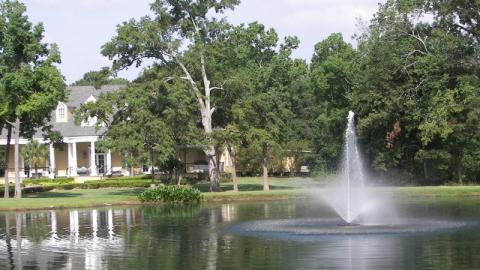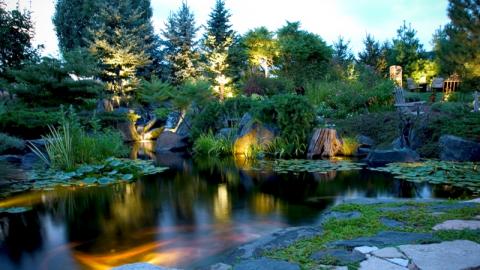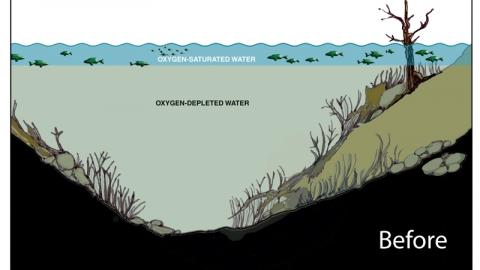In each case, we have the same situation: a large city and a monumental fountain being built on a very prominent square as part of the redevelopment of a whole city district. In all three cases, the vibrant and illuminated fountains are built away from the centre of the square. They are dry fountains, i.e. they are built into the pavement with jets rising out of the ground. These three fountains have been built by the company SIREV.

A fountain that is a true work of art in Nantes
The Place Graslin, the second largest square in Nantes, is a favourite place for the people of Nantes to wander out in the evening. The fountain is opposite the Theatre Graslin, a very attractive building that has recovered all its grandeur following the restoration work and right next to the La Cigale restaurant there is a famous Art Nouveau brasserie, a listed building.
The fountain is a real work of art built within the framework of a complete restoration of the square, now paved with brand new slabs and essentially a pedestrian area. The building work lasted almost 8 months. The fountain is made up of large circular steel panels, cut to represent prominent figures and bronze masks. It was designed by the artist Nicolas Fedorenko and planned by the firm of architects AUP. It consists of 180 very closely packed water jets. An automated operating system allows for the water height to be varied, independently, via the jet manifold. Thirty white watertight LEDs are located at the foot of each water column, creating soft lighting under gratings, making the figures and grid patterns stand out.
The water jets are connected to frost sensors and wind gauges: the more wind there is, the lower the trajectory of the jets and the fountain stops when the wind is too strong. Similarly, the fountain stops when it freezes. The same system can be found in Nantes and Calais.
Two 300 m3 per hour water feature pumps are located in an underground utility room. The water storage facility is also found in this room. The tank is full of water, which is then used in a closed circuit to supply the fountain. However, prior to this, it passes through a water softener and subsequently it is treated mechanically by a sand filter, then chemically to correct the pH and treat the water. It will then be of an acceptable quality for use in a public environment. Furthermore, equipment normally found in any other utility room can be found in this place, i.e. ventilation, lighting, heating and electrical cabinet.
The cost of the project was € 490,000 in total (civil engineering, water, lighting, artistic metalwork). The company SIREV dealt with the water appliances and the lighting, and DLE Nantes was responsible for the civil engineering.
Illuminated at night and livened up by its fountain during the daytime, with an unobstructed view of the Cambronne Court and the prominent Theatre Graslin, the Place Graslin, redesigned by the architect-town planner Yves Steff, now gives priority to pedestrians, providing a large walking area. It will thus be able to host festive and cultural events and be able to resume its original role.
A vibrant and colourful fountain on the Place d’Armes in Calais
The Place d’Armes in Calais, the most prominent square in the city, is situated near the sea in a district that was entirely destroyed during World War II. The area was rebuilt in the fifties in a rather austere style and since then has never been restored. Therefore, the local authority wants to re-energise the area by undertaking major redevelopment works.
Quite substantial changes have been made to the Place d’Armes: an outdoor market hall was built to host events and act as an extension of the market. The city landscape was completely reshaped, with the planting of vegetation, making the area easier on the eye. A dry fountain was installed at the foot of the XIII century Watchtower, the only ancient building still standing. The fountain is located next to the bronze statues of General de Gaulle and his wife Yvonne, who was born in Calais. The building work on the square, which was completed in December, lasted 10 months.
The fountain consists of three rows of water features, 11 per row, making 33 water features in total. The three rows can work independently of each other and the jets can vary in height, independently of each other and each individual jet can vary in heigh from one row to another. The fountain is linked to software that allows for sophisticated programmes to be created: 10 programmes create cascades, waves or explosive features. The client has the possibility of controlling the programmes remotely from his or her mobile phone via a modem.
At the foot of each jet, integrated watertight LED lights in R-G-B accentuate the jets and give them relief and color variations.
Three 150 m3/hour water feature pumps are located in an underground utility room where the water tank is also housed. The water undergoes the same treatment as in Nantes: water softener, sand filter, pH correction and treatment.
The hydraulic and electrical work amounted to € 320,000. and approximately € 200,000 must be added to this for the civil engineering work (carried out by Eurovia).
This very well illuminated fountain brings something extra to the square, in a city where the skies are often cloudy and the lack of light is acutely felt in winter.
Water features and fog and misting fountains on the Place du Martroi in Orleans
Although it is an iconic and unavoidable part of the city of Orleans, the Place du Martroi has suffered from a lack of recognition, no doubt due to its unobtrusive character, poorly defined uses or advanced state of decline. Orleans city council, therefore, decided to renovate the whole square, completed in November 2013 after 15 months of work.
This royal square, with its statue of Joan of Arc, is situated on an historic site. The aim of the project was to simplify the layout. More specifically, the square was widened on either side to take in the adjacent streets, now covering almost 2 hectares, i.e. twice its previous size, and making it a pedestrian-only zone, thus levelling out its dome-shaped topography. Particular attention was paid to the ground work and an attractive recreational fountain was added to the square for the enjoyment of children and grown-ups alike.
The fountain consists of three rows of water features, 9 per row, making 27 water features in total. Twenty-seven frequency converters allow for the form and height of the jets, which can be anything from 0 to 2 metres, to be varied at random. Seventy misting or fogging devices operate alternately with the water features. Twenty-seven watertight colour change LED projectors are located at the foot of each jet and illuminate the water features. The jets, misters and lighting are controlled by an automated programming unit.
As in the case of the other two fountains, the operating pumps and water tank are located in an underground utility room. The water is also treated in the same way (water softener, sand filter, pH correction and treatment), before being injected into the circuit.
The cost of the fountain was € 378,000 (fountains and water resources, civil engineering). On this site, the company Sirev dealt with the water appliances at a cost of € 171,000 and Sogea was responsible for the civil engineering.
In this way these three fountains have given life back to unattractive squares that had drifted into a state of decline, making them, once again, favourite places for the people of Nantes, Calais and Orleans to go out in the evening for a stroll, thanks to the restoration work undertaken by these towns.



